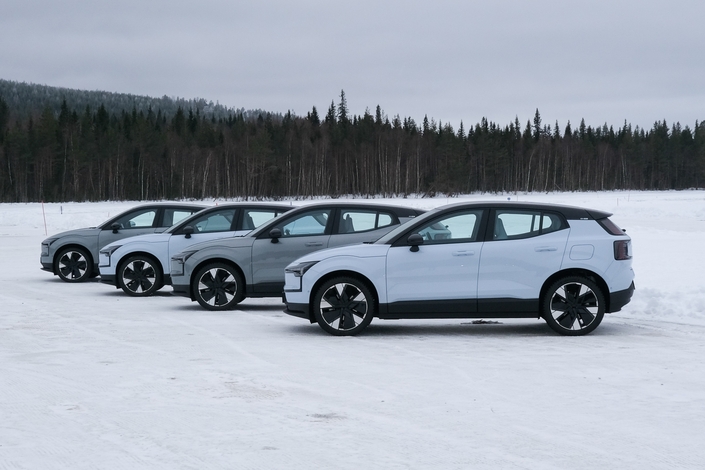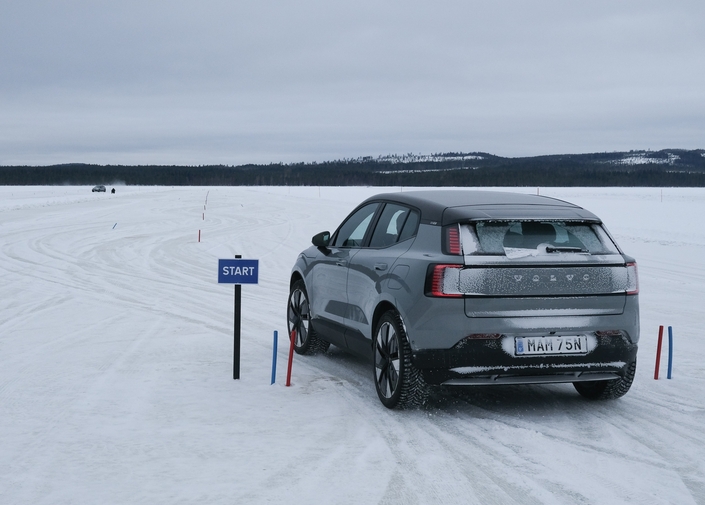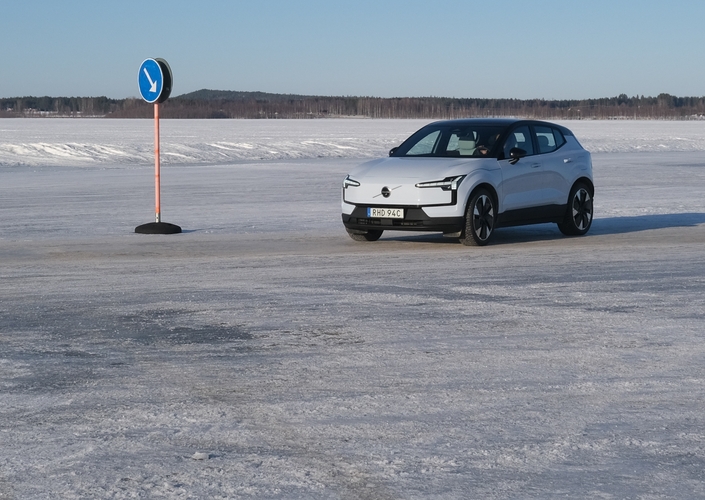He shrugs when someone points out the cable connected to his car. No, it's not electric, but Jorn equipped it with a block heater. A what ? A “block heater”, which allows the old Volvo diesel to start in the morning. Thanks to the socket located on the front, and plugged into a domestic socket all night, the engine and battery remain at a positive temperature. This is because in the north of Sweden, a stone's throw from the Arctic Circle, between Kiruna and Narvik, winter temperatures can reach -40°. Enough to have the skin of any mechanic.
In the land of the forgotten
But, since he's used to plugging in his diesel as soon as he gets home, why not go straight to electric? Jorn is thinking about it, and like 38% of Swedes last year, he will not hesitate when it comes time to change his car, if his budget allows it. Even if, in this corner of Lapland, public terminals remain rare, whereas they are numerous in Stockholm or Gothenburg. But the capital is far away, more than 1,200 km to the south. “Here, we are rather forgotten”. And when they go there, it is by train or plane, rarely by car, especially not in winter.
So, the inhabitants of the far north are coping with bad luck, and if fewer of them are switching to electric than other Swedes, it is not to differentiate themselves, but for reasons more financial than logistical. “We are less rich than the southerners.”
The distance between municipalities, where we sometimes travel tens of kilometers before seeing a bell tower, and autonomy, do not seem to be a problem for those who have decided on the EV in Lapland. No more than the fact that autonomy is necessarily reduced by the cold. The Volvos that we came to test here offer, on paper, more than 450 km of autonomy. But while it's -10°, they still allow themselves to do 300, and what's more, with studded tires.
Either way, as Jorn points out “it’s getting less and less cold”. In this month of March, although it is freezing for us, the temperature is 10° above average. Enough to awaken quite strong environmental awareness in the countries of the North? Perhaps, but as elsewhere in Europe, this is not the first concern of those who decide to switch to 100% electric.
It is rather linked to the reliability of this technology. “It’s solid. And I see electric cars passing by. I see them even before you, the journalists”, he laughs. Because not far from his home is one of the European capitals of the automobile: Kiruna, a Sámi town, where many brands have their base camp. Where the Volvos that we are testing have undoubtedly undergone their special development tests in extreme cold. On one of the frozen lakes that pierce the forests of the region? Without a doubt.

These lakes are accessible by car as soon as the ice thickness reaches 50 cm. Today, it measures 90 cm. No risk of breakage therefore, even if the Volvo staff insists not to group the cars together on the same frozen plot. It's true that the ten EX30s (1,841 kg each) and EX40s (more than two tonnes per piece) can have the effect of a nice heavy weight on the frozen lake.
But if the first SUV is rather well-known, what about the second? A new car? not really. It is nothing more and nothing less than the XC 40 Recharge which aligns its name with the other electric Volvos and will now all be called XC. A name change which does not change the weight of this SUV, nor that of its little brother, derived from the Smart #1, a brand owned by Geely like the Swede.
So many heavy electrics. But in fact, can all these kilos, necessarily heavier than on a thermal car, influence driving in these winter situations? Because after all, Volvo is the first and today only car brand in Sweden. A country where the manufacturer, which has become Chinese, still holds 20% market share despite everything. A country also where long and harsh winters require adapted cars. However, the brand has announced that in 2030 it will only have electric models in its catalog. Will they be in phase with the northern climate despite their weight not really suited to snow or ice? And not just because of a collapse of the latter?

The “sled” effect of these two big electric babies, combined with 20-inch wheels, is inevitable. On all roads, heavy is the enemy of good, especially when the road is icy. However, Ford Ranger or Mitsubishi L200 pick-ups abound in the far north, and they don't seem to frighten their drivers either. And they are not models of slimness either.
As for the two Swedish electric models, available in two or four-wheel drive, with powers ranging from 272 to 442 hp, they behave rather honorably, thanks to the magic of the electric and its strong and instantaneous torque which allows you to resume of grip when it's necessary. As for the ESP, which can be disconnected on the Ex30, but not on the EX40, it plays the role of vigilant policeman at all times, even with the 272 hp version in propulsion mode, which must be pushed to the limit for it to begins a Candeloresque figure skating session.
Four-wheel drive not essential
As for four-wheel drive, are they really essential in these snowy landscapes? In the north of Sweden, the tarmac roads are remarkably clear of snow, much better than in France, and you really have to get on tracks or in off-road complete for riding in the snow. It is therefore only in these particular places that 4X4s make the difference. And again, the terrain is rather flat, which avoids skating sessions at the start. The rest of the time, and even on frozen lakes, two-wheel drive does the job perfectly. As for this fjord crossing, near Lulea.

In the summer, a ferry takes cars across it. But as soon as the boat is stuck in the ice, the fjord turns into a secondary road where completely standard cars pass each other on a well-marked ice path. Mothers and workers returning from work take this temporary route without even thinking about it, and without anyone thinking of panicking, as is sometimes the case at the first snowflake on the N118 near Paris. Our two-wheel drive Volvo EX 30 also took this alternative route, like everyone else, like large 4x4s and like small thermal city cars.
This short journey therefore made it possible to solve a mystery: why, in this country of extreme cold, electric cars sell twice as much as here? The cold enemy of electric vehicles does not seem to pose any problem, since northern Swedes, given the large size of the country, are more inclined to take other means of transport for long distances.
As for charging stations, which are rather rare in the north of the country, they are offset by home charges. The natives are obliged to plug in their thermals all winter, so they do not change their habits. So many reasons that make the Swedes fans of wattage cars. So many reasons which reassure the country's only manufacturer and encourage it to completely switch over within 5 years. So many reasons that will eventually convince Jorn to buy electric too. As soon as he has gathered the necessary budget.
Volvo EX30
| Size | Power | Battery/autonomy | Rate | |
| Volvo Ex30 272/428 | 4.23m | 272 hp/428 hp | 51/69 kWh – 344/480 km | From 37,500 € |
Volvo EX40
| Size | Power | Battery/autonomy | Rate | |
| Volvo EX40 single/twin | 4.40 m | 238hp/442hp | 67/78 kWh – 400/537 km | From 48,800 € |

